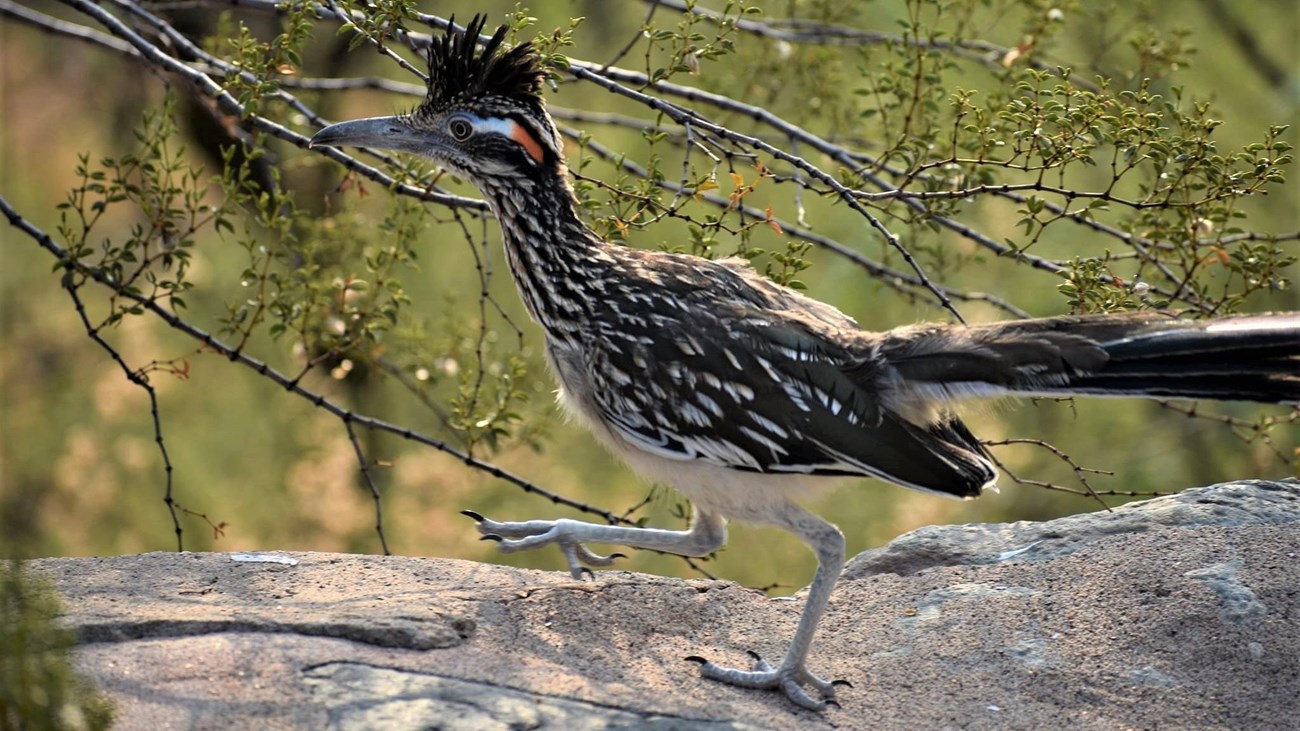
NPS Photo / Paul Ollig Although Montezuma Castle is small in size, many species of animals live here. Birds, mammals, lizards, and insects are seen most frequently, though seasons and weather play a large role in determining what animals are active. Desert animals have a variety of adaptations for dealing with the temperature and moisture stresses present at Montezuma Castle. Most desert animals are nocturnal, meaning they are active primarily at night. This can be an adaptation to both predation and hot summer daytime temperatures. Nocturnal animals include small desert rodents, skunks, ringtails, foxes, bobcats, mountain lions, bats, and owls. Animals that are most active at dawn and dusk are called "crepuscular". These times of day are cooler than mid-day. The half-dark makes it safer for prey animals because they are less visible, yet visibility is good enough to locate food. Some animals are crepuscular mostly because their prey is crepuscular. Crepuscular animals include elk, mule deer, coyotes, porcupines, desert cottontails, black-tailed jackrabbits, and many songbirds. A few desert animals are primarily active during the day, or "diurnal". These include rock squirrels, chipmunks, lizards, snakes, hawks, and eagles. Many animals have a temperature range in which they are active, so their active times of day adjust to the season. Snakes and lizards go into an active state of torpor during the winter, are active during the day during the late spring and early fall, and become crepuscular during the heat of summer. Many insects also alter their times of activity, which in turn influences the activity of insect eaters. 
Birds
Take flight and learn about the birds of Montezuma Castle. 
Reptiles
Snakes, lizards, and turtles. 
Mammals
Mammals of the southwestern desert. 
Invertebrates
Leap into the small world of invertebrates. Select a Park:Select a Species Category (optional):
Search results will be displayed here.
|
Last updated: December 6, 2025
